Theories About Future Snowmobiles
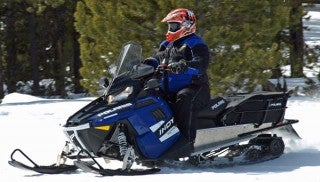
Time for some wild speculation
Some interesting things have occurred in powersports recently and got us thinking “what If.” For example, Honda supposedly patented a design for a high-efficiency, cleanish fuel injected two-stroker. Polaris announced a new 144-horsepower turbocharged four-stroke twin for its US$25,000 RZR XP Turbo EPS Side-by-Side. Plus, at the same time, Polaris unveiled the all-electric Ranger EV LI-ION with an estimated range of “up to” 50 miles. And, Yamaha, which claims to be all four-strokes all the time, actually offers a couple of potent 250cc two-stroke powered off-road moto-bikes for 2016, the YZ250X and YX250.
What are we thinking here? Let’s just say that if we were just spitballin’ here, we could come up with some “what ifs” for snowmobiling. The Honda what if has to be out there a bit, but not impossible.
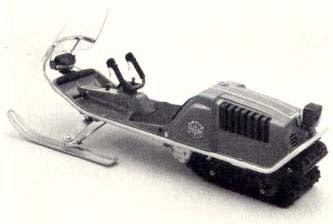 Historically and technically Honda did get into the sport as a snowmobile manufacturer in 1972, producing about 200 White Fox units that were to be sold through selected American Honda dealers.
Historically and technically Honda did get into the sport as a snowmobile manufacturer in 1972, producing about 200 White Fox units that were to be sold through selected American Honda dealers.Since the early 1970s, Honda has viewed a possible entry into snowmobiling. The company studied the sport into the early 1970s and created working prototypes of a 180cc two-stroke powered snow vehicle it called the White Fox. Historically and technically Honda did get into the sport as a snowmobile manufacturer in 1972, producing about 200 White Fox units that were to be sold through selected American Honda dealers. Barely any of those models made their way to consumers, as Honda almost immediately pulled the plug on the program, recalling the units and destroying them.
The White Fox was a victim of timing, being introduced at the beginning of the 1970s energy crisis. Honda rightfully decided it was a bad time for the company to enter a market that had already begun to shrink and already was seeing established snowmobile brands exiting the business.
Beyond 2016: Future Snowmobiles
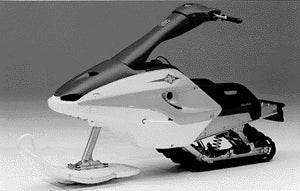 Offered in Japan but only previewed in the US, Honda thought about bringing this motorized sled to market near the turn of the century. More like a tracked Jet Ski than a true snowmobile, it had a single ski and was powered by a Honda four-stroke. Such a snow toy might make some sense now with today’s more adventurous and athletic snowmobilers.
Offered in Japan but only previewed in the US, Honda thought about bringing this motorized sled to market near the turn of the century. More like a tracked Jet Ski than a true snowmobile, it had a single ski and was powered by a Honda four-stroke. Such a snow toy might make some sense now with today’s more adventurous and athletic snowmobilers. While that was bad timing, Honda still maintained interest in a snow vehicle of its own. Around the turn of the century, the company allowed selected snowmo-writers to try out a motorized sled that was more like a tracked Jet Ski than a true snowmobile. It had a single ski, a rubber track and was powered by a Honda four-stroke. Again the timing wasn’t good, but in reality such a snow toy might make some sense now with today’s more adventurous and athletic snowmobilers.
Back to that Honda two-stroke concept uncovered by the minions at MoreBikes, who managed to about wet themselves with enthusiasm over what they determined was a “…two-stroke feed technology light years ahead…” that they felt could be compliant with various worldwide legislative constraints on two-strokes.
If the Honda technology actually could bring high powered, clean burning, light weight two-stroke engine technology to powersports, why not fit the “what if” engine into a future snow toy? Consider that snowmobiling needs a boost. Although, the current world of snowmobiling works for us, it truly is bland and in dire need of a serious reboot. We’re old and old school. But the future of the sport has to bring in new people, probably Millennials, who make up the largest share of today’s workforce and represent the largest population, second only to the Boomers. The millennial importance will continue to grow as the Boomer influence is literally dying off.
This is why we feel that the time may be right for a new snow toy. Suppose that’s why Polaris bought itself a snow bike company? Honda’s snow toys were all oriented to an active lifestyle, like their off-road bikes and stand up watercraft. May be that the timing is right now for new concepts.
As for Polaris, that turbocharged RZR comes as a direct response to Can-Am’s Maverick Turbo “wheeler.” The Can-Am features a 131hp V-twin. Polaris counters with a 144hp twin. That leads us to wonder if there might be a turbo four-stroke in Polaris’ snowmobiling future. In snowmobiling, Polaris is the opposite of Yamaha in that Yamaha is all four-strokes and Polaris is all two-strokes. What does that say? For one thing it says that Polaris does just fine with two-strokes, especially in the mountains where four-strokes have to be boosted to play with a good running 800cc two-stroke. Four-strokes add weight, so if a sled maker was to take a four-stroke to the deep powder, it would have to make serious power, like the nearly 180 horses Arctic Cat carries in its M 9000 models.
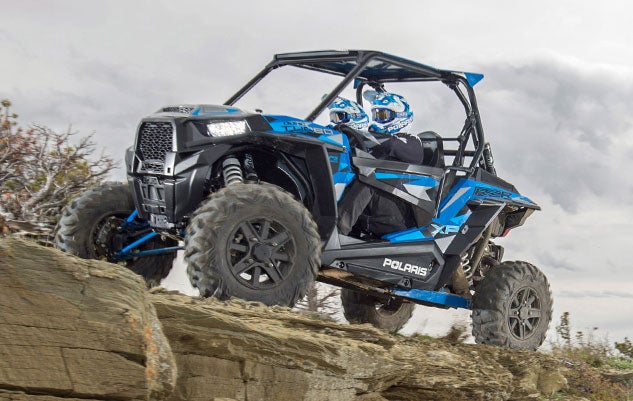 With some bemoaning the lack of entry-level sleds, we forget that inflation has spiked prices. For example, a brand new 1970s Grand Prix with the 744cc JLO engine option that retailed for US$1850 would be priced at US$11,120 now.
With some bemoaning the lack of entry-level sleds, we forget that inflation has spiked prices. For example, a brand new 1970s Grand Prix with the 744cc JLO engine option that retailed for US$1850 would be priced at US$11,120 now.We can speculate that Yamaha and Arctic Cat will concoct a boosted Yamaha triple to replace the current Suzuki four-stroke twin, but will Polaris bother to create a high horsepower four-stroke for its mountain clientele? Never say never, but why? The Polaris Pro-RMK works. It sells. It’s popular and has the competition chasing its snowflap.
Perhaps a four-stroke alternative for the trail makes sense. The RZR turbo powerplant probably isn’t the direct answer, but a Polaris-built four-stroke with a boost might make sense for touring and long distance sport riders who like the fuel economy, lack of two-stroke oil odor and the quiet of a four-stroke. There is also the fact that Polaris doesn’t have a Yellowstone compliant sled for rental operators. Ski-Doo’s ACE engines capitalized on that and most all meet Yellowstone’s new Best Available Technology standard, which means Ski-Doo rental fleets can tour the park.
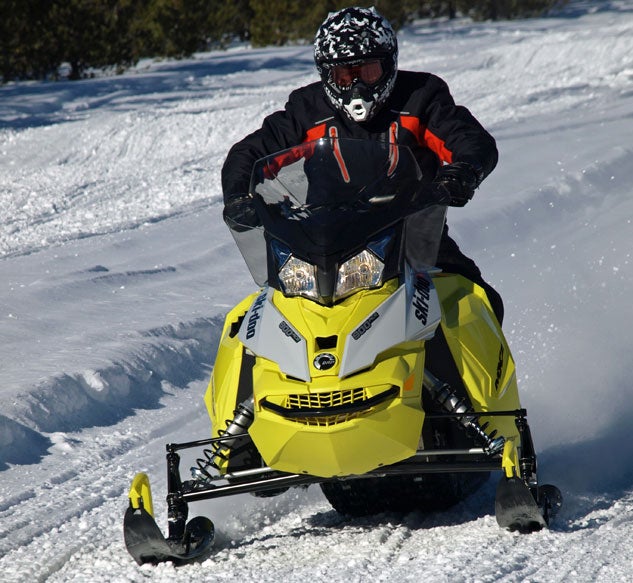 Ski-Doo aced the prickly Yellowstone Best Available Technology tests with its 600cc and 900cc ACE four-strokes, making all such equipped Ski-Doo qualified to run in the park.
Ski-Doo aced the prickly Yellowstone Best Available Technology tests with its 600cc and 900cc ACE four-strokes, making all such equipped Ski-Doo qualified to run in the park.But, what if Polaris brought its Ranger EV LI-ION lithium-Ion battery and electric engine technology to its snowmobiles? The Ranger EV utilizes technologies associated with Brammo motorcycles, which Polaris acquired back in January. Brammo has been a pioneer in electric motorcycles and has agreed to supply electric powertrains to Polaris for use in both on and off-road vehicles. Of course, let’s not forget that Polaris also includes electric vehicle maker Global Electric Motors (GEM) and Goupil Industries among its constituent parts. Once a part of Chrysler, GEM manufactures street-legal people movers. Based in France, Goupil manufactures both all electric and electric-hybrid utility vehicles. It would appear that Polaris could produce either an all-electric or a hybrid snowmobile that would meet Yellowstone’s strictest qualifications for noise and emissions.
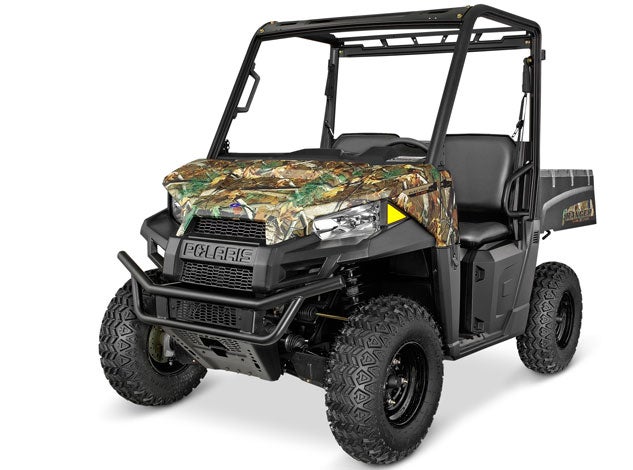 Polaris’ just announced the Ranger EV LI-ION, which borrows Brammo motorcycle technology and has a range of 50 miles.
Polaris’ just announced the Ranger EV LI-ION, which borrows Brammo motorcycle technology and has a range of 50 miles.The Polaris Ranger EV LI-ION is said to have a 50-mile range, which in a snowmobile might be a bit short for a full travel day in Yellowstone Park. Considering that the Ranger EV LI-ION weighs in at 1,288 pounds, you would expect that an electric lithium ion power pack would be heavier than a standard sled. While we are not envisioning a Rush or Indy EV Li-ION any time soon, it would make an interesting engineering project. Using a single high-efficiency AC-induction motor with direct drive capabilities could lower the sled’s profile, center weight and offer excellent torque characteristics. Batteries could be configured into the tunnel, hidden and readily accessed by a special seat. This is a do-able vehicle. A 2014 Brammo Empluse electric motorcycle weighed in at 460 pounds, had the equivalent of 54hp with 46.5 foot-pounds of peak torque, enjoyed a range of 80 or so miles and had a claimed top speed of 110 mph. Of course, range is the limiting factor with most electric vehicles, plus a snowmobile adds cold weather to hinder battery effectiveness.
Innovation Trends in Snowmobiling
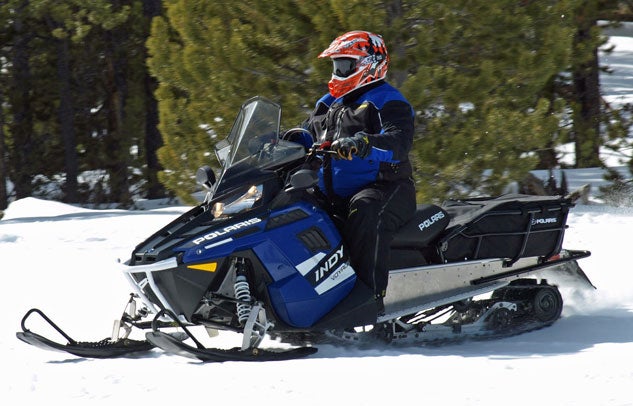 Could a sled with the Ranger EV LI-ION’s high-efficiency AC-induction motor with direct drive capabilities and excellent torque characteristics make sense for use in Yellowstone Park?
Could a sled with the Ranger EV LI-ION’s high-efficiency AC-induction motor with direct drive capabilities and excellent torque characteristics make sense for use in Yellowstone Park?This is all “what if” so we can venture some spitballing here, right? Realistically, we can see these companies bringing some newness to snowmobiling if they want. The two-stroke isn’t dead. Yamaha knows that and has dirt bikes to attest to it. Polaris fancies two-strokes, owns a snow bike company and offers wheeled products with electric power and turbo boost. Ski-Doo’s parent used to be a dirt bike maker with its original Can-Am and has its own engine maker, Rotax, to come up with lightweight, high revving engines to power a next generation snow toy designed at the growing powersport wants of a booming Millennial generation of adventure seekers.
As we said, we are fine with the status quo, even as bland as it is, but for the sport to grow, change needs to come and doing things the way they’ve always been done isn’t going to be good enough. There needs to be a new openness to the vehicles and the designs needed to propel future growth. Again, we’re just spitballin’ here!



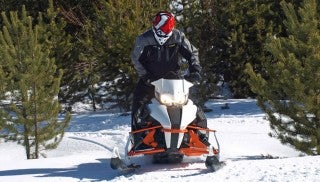
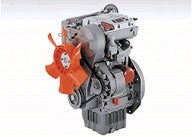
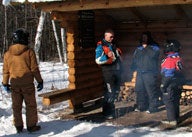


 Your Privacy Choices
Your Privacy Choices